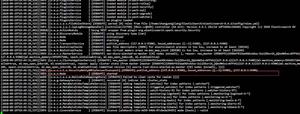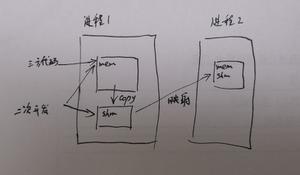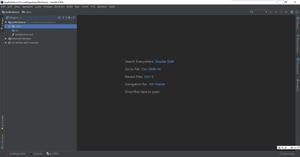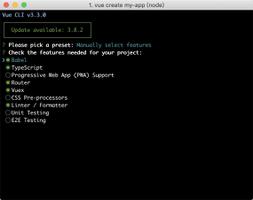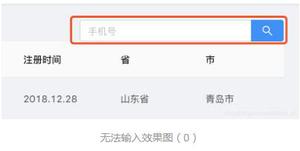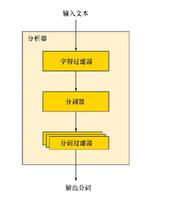java使用elasticsearch分组进行聚合查询过程解析
这篇文章主要介绍了java使用elasticsearch分组进行聚合查询过程解析,文中通过示例代码介绍的非常详细,对大家的学习或者工作具有一定的参考学习价值,需要的朋友可以参考下
java连接elasticsearch 进行聚合查询进行相应操作
一:对单个字段进行分组求和
1、表结构图片:
根据任务id分组,分别统计出每个任务id下有多少个文字标题
1.SQL:select id, count(*) as sum from task group by taskid;
java ES连接工具类
public class ESClientConnectionUtil {
public static TransportClient client=null;
public final static String HOST = "192.168.200.211"; //服务器部署
public final static Integer PORT = 9301; //端口
public static TransportClient getESClient(){
System.setProperty("es.set.netty.runtime.available.processors", "false");
if (client == null) {
synchronized (ESClientConnectionUtil.class) {
try {
//设置集群名称
Settings settings = Settings.builder().put("cluster.name", "es5").put("client.transport.sniff", true).build();
//创建client
client = new PreBuiltTransportClient(settings).addTransportAddress(new InetSocketTransportAddress(InetAddress.getByName(HOST), PORT));
} catch (Exception ex) {
ex.printStackTrace();
System.out.println(ex.getMessage());
}
}
}
return client;
}
public static TransportClient getESClientConnection(){
if (client == null) {
System.setProperty("es.set.netty.runtime.available.processors", "false");
try {
//设置集群名称
Settings settings = Settings.builder().put("cluster.name", "es5").put("client.transport.sniff", true).build();
//创建client
client = new PreBuiltTransportClient(settings).addTransportAddress(new InetSocketTransportAddress(InetAddress.getByName(HOST), PORT));
} catch (Exception ex) {
ex.printStackTrace();
System.out.println(ex.getMessage());
}
}
return client;
}
//判断索引是否存在
public static boolean judgeIndex(String index){
client= getESClientConnection();
IndicesAdminClient adminClient;
//查询索引是否存在
adminClient= client.admin().indices();
IndicesExistsRequest request = new IndicesExistsRequest(index);
IndicesExistsResponse responses = adminClient.exists(request).actionGet();
if (responses.isExists()) {
return true;
}
return false;
}
}
java ES语句(根据单列进行分组求和)
//根据 任务id分组进行求和
SearchRequestBuilder sbuilder = client.prepareSearch("hottopic").setTypes("hot");
//根据taskid进行分组统计,统计出的列别名叫sum
TermsAggregationBuilder termsBuilder = AggregationBuilders.terms("sum").field("taskid");
sbuilder.addAggregation(termsBuilder);
SearchResponse responses= sbuilder.execute().actionGet();
//得到这个分组的数据集合
Terms terms = responses.getAggregations().get("sum");
List<BsKnowledgeInfoDTO> lists = new ArrayList<>();
for(int i=0;i<terms.getBuckets().size();i++){
//statistics
String id =terms.getBuckets().get(i).getKey().toString();//id
Long sum =terms.getBuckets().get(i).getDocCount();//数量
System.out.println("=="+terms.getBuckets().get(i).getDocCount()+"------"+terms.getBuckets().get(i).getKey());
}
//分别打印出统计的数量和id值
根据多列进行分组求和
//根据 任务id分组进行求和
SearchRequestBuilder sbuilder = client.prepareSearch("hottopic").setTypes("hot");
//根据taskid进行分组统计,统计出的列别名叫sum
TermsAggregationBuilder termsBuilder = AggregationBuilders.terms("sum").field("taskid");
//根据第二个字段进行分组
TermsAggregationBuilder aAggregationBuilder2 = AggregationBuilders.terms("region_count").field("birthplace");
//如果存在第三个,以此类推;
sbuilder.addAggregation(termsBuilder.subAggregation(aAggregationBuilder2));
SearchResponse responses= sbuilder.execute().actionGet();
//得到这个分组的数据集合
Terms terms = responses.getAggregations().get("sum");
List<BsKnowledgeInfoDTO> lists = new ArrayList<>();
for(int i=0;i<terms.getBuckets().size();i++){
//statistics
String id =terms.getBuckets().get(i).getKey().toString();//id
Long sum =terms.getBuckets().get(i).getDocCount();//数量
System.out.println("=="+terms.getBuckets().get(i).getDocCount()+"------"+terms.getBuckets().get(i).getKey());
}
//分别打印出统计的数量和id值
对多个field求max/min/sum/avg
SearchRequestBuilder requestBuilder = client.prepareSearch("hottopic").setTypes("hot");
//根据taskid进行分组统计,统计别名为sum
TermsAggregationBuilder aggregationBuilder1 = AggregationBuilders.terms("sum").field("taskid")
//根据tasktatileid进行升序排列
.order(Order.aggregation("tasktatileid", true));
// 求tasktitleid 进行求平均数 别名为avg_title
AggregationBuilder aggregationBuilder2 = AggregationBuilders.avg("avg_title").field("tasktitleid");
//
AggregationBuilder aggregationBuilder3 = AggregationBuilders.sum("sum_taskid").field("taskid");
requestBuilder.addAggregation(aggregationBuilder1.subAggregation(aggregationBuilder2).subAggregation(aggregationBuilder3));
SearchResponse response = requestBuilder.execute().actionGet();
Terms aggregation = response.getAggregations().get("sum");
Avg terms2 = null;
Sum term3 = null;
for (Terms.Bucket bucket : aggregation.getBuckets()) {
terms2 = bucket.getAggregations().get("avg_title"); // org.elasticsearch.search.aggregations.metrics.avg.InternalAvg
term3 = bucket.getAggregations().get("sum_taskid"); // org.elasticsearch.search.aggregations.metrics.sum.InternalSum
System.out.println("编号=" + bucket.getKey() + ";平均=" + terms2.getValue() + ";总=" + term3.getValue());
}
以上是 java使用elasticsearch分组进行聚合查询过程解析 的全部内容, 来源链接: utcz.com/z/356905.html

